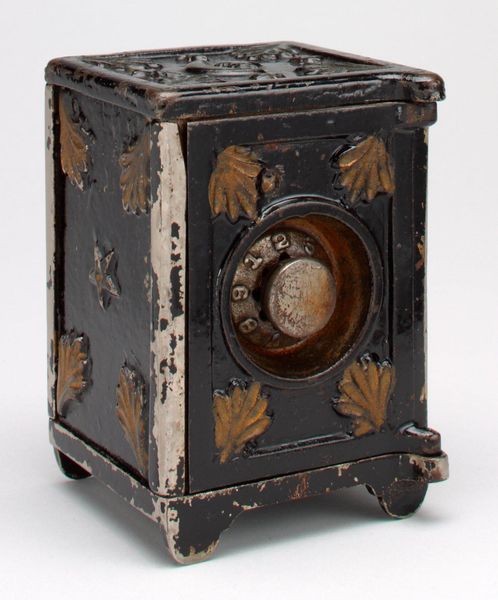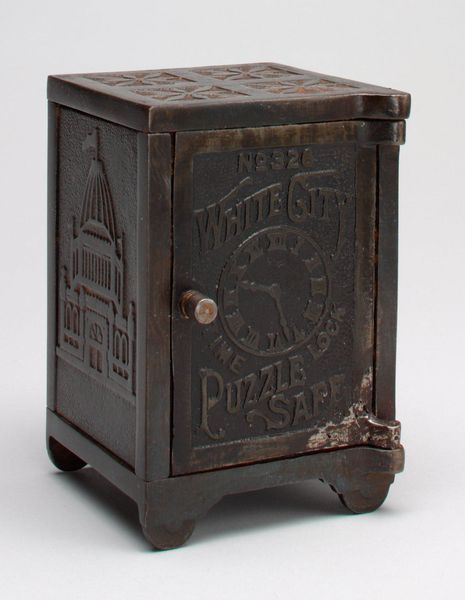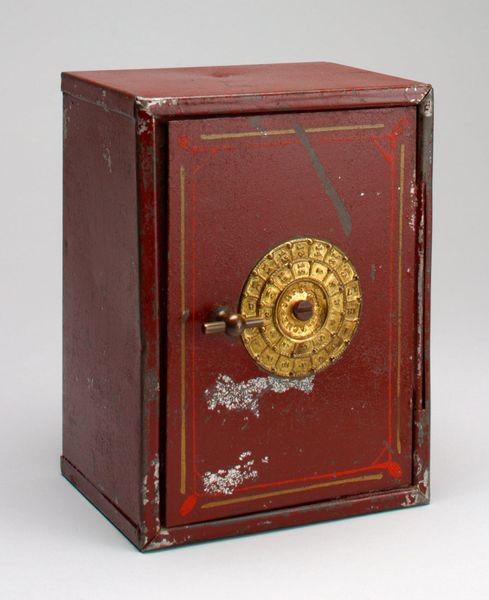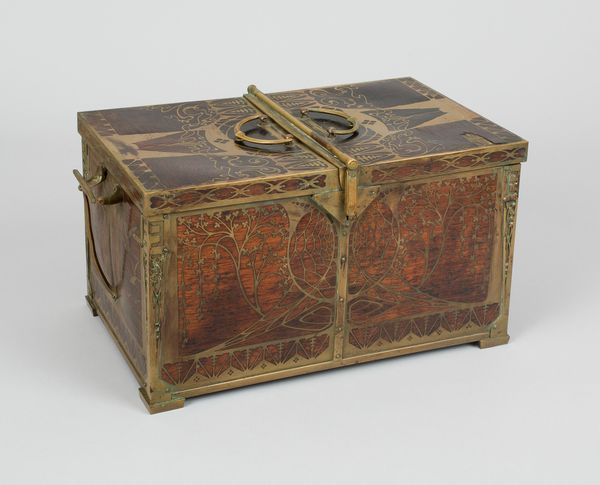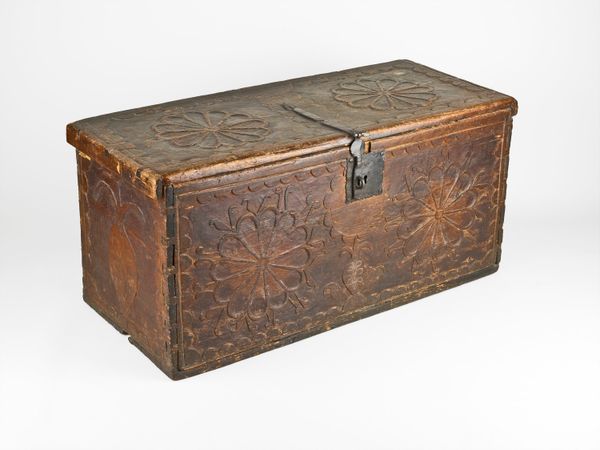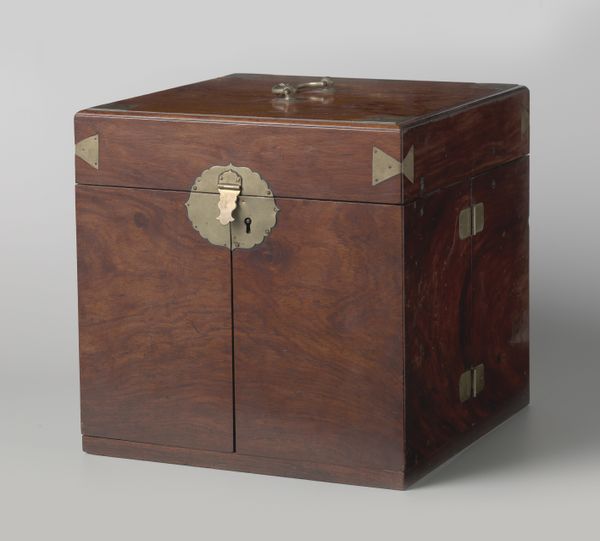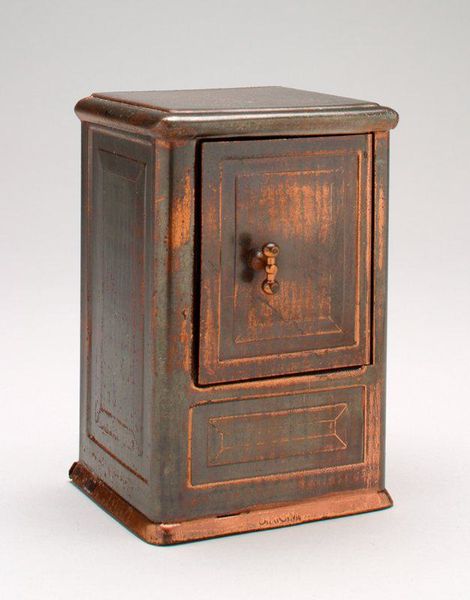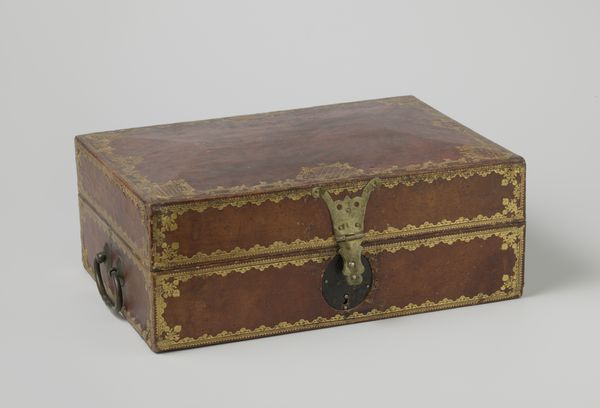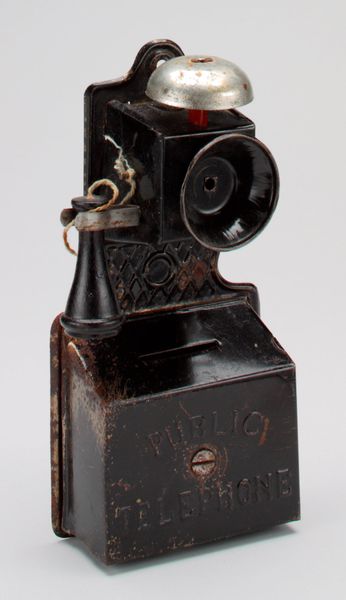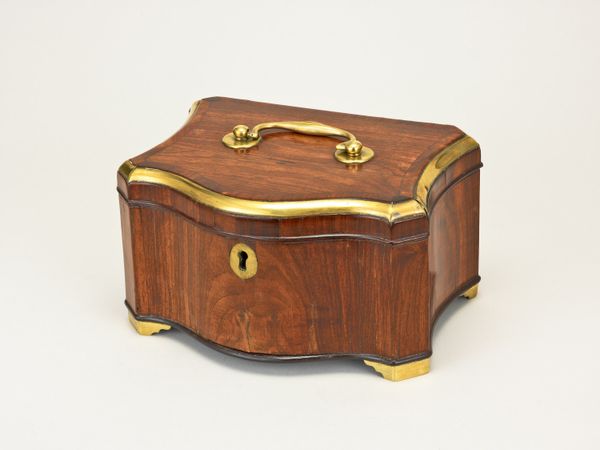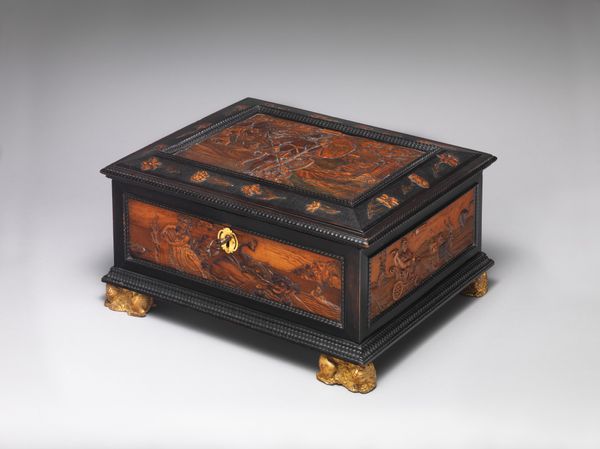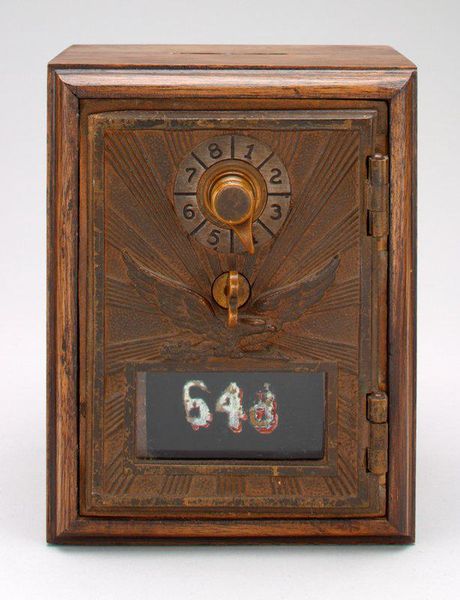
-Fidelity Trust Sampler Safe- still bank c. 1885
0:00
0:00
assemblage, metal, sculpture
#
assemblage
#
metal
#
sculpture
#
sculpture
#
united-states
#
decorative-art
Dimensions: 8 3/4 x 6 3/16 x 3 3/8 in. (22.23 x 15.72 x 8.57 cm)
Copyright: Public Domain
Editor: So, this is a still bank resembling a safe, titled "Fidelity Trust Sampler Safe", dating back to approximately 1885. It's an assemblage primarily made of metal. The aesthetic, though functional, feels quite ornate. What historical forces shaped its creation? Curator: The late 19th century saw a boom in decorative arts aimed at a burgeoning middle class. Items like this safe-bank weren't just about functionality, they were about aspirational aesthetics. Note the careful lettering and imagery—who do you think they're meant to appeal to, and what anxieties might they address? Editor: Well, "Fidelity" and "Trust" are prominently displayed; I suppose the message is directed towards families to invest wisely, implying safety during potentially economically volatile times. Curator: Precisely. Consider how this object operates within a wider network. Banks were not only institutions, they were also invested in public image, so such collaborations aimed to instill confidence. These weren't just decorative objects, they participated in larger systems of economic power. Editor: That’s a great point. It’s interesting to think about this as a tool of the financial institutions aimed to shape perceptions. Was the Henry C. Hart Manufacturing Company famous in particular? Curator: Hart Manufacturing was well-known for novelty items. These "sampler safes" were likely promotional tools. Mass production allowed such firms to market objects on a large scale, and these objects furthered ideologies and class distinctions. Look at the miniature lock, almost infantilizing handling money. Does that idea influence your assessment of its broader impact? Editor: Yes, it adds another layer. I had seen it just as a cute object, now I realize how such common objects reinforce power structures. Curator: Exactly. We often forget how everyday art helps maintain the social and political order, as well as just making an object 'pretty'. It goes beyond aesthetics. Editor: Thanks. Thinking about its function and cultural message has definitely opened up a richer way to consider even simple artifacts.
Comments
No comments
Be the first to comment and join the conversation on the ultimate creative platform.
